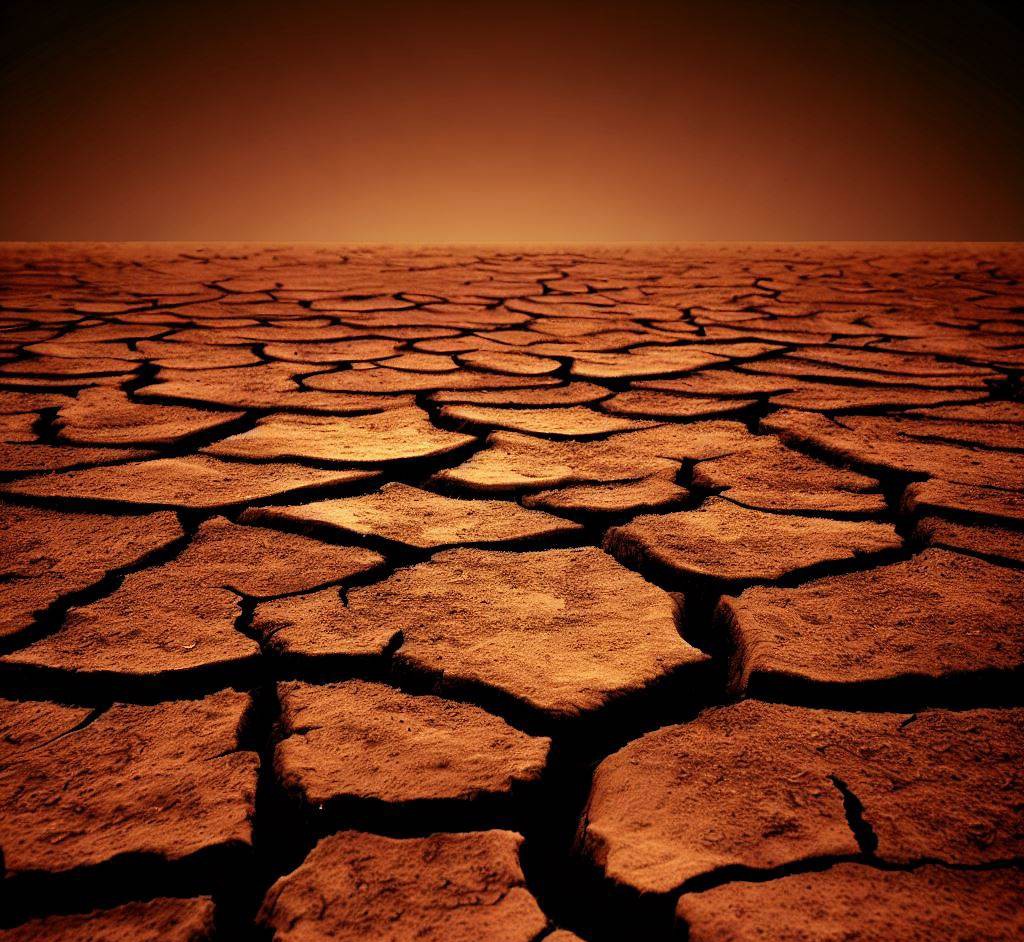Drought is a prolonged period of abnormally low precipitation, resulting in a scarcity of water that adversely affects the environment, agriculture, and human activities.
It is characterized by dry and arid conditions, reduced water availability, and increased water stress leading to dehydration of soil, plants, and water sources.
Facts related to the Drought:
• Officially, on an average, 50 million Indians every year, 33 percent of the country is chronologically drought-affected. And close to 68 percent areas are Drought- prone.
• 21 percent area receives less than 700mm rains annually making such areas the Hot spots of drought.
• Groundwater has become the main source of irrigation, and it led the more than 30% of blocks in the country to be classified as semi-critical, critical or overexploited.
• According to Ministry of Environment Forest and Climate Change, Desertification, land degradation and drought cost India about 2.5% of gross domestic product in 2014-15.

Types/Causes of Drought:
Drought can occur in various forms, such as meteorological (lack of rainfall), hydrological (depletion of surface and groundwater), or agricultural (insufficient moisture for crop growth).
1) Meteorological drought: It refers to a prolonged period of abnormally dry weather characterized by a lack of precipitation.
2) Agricultural drought: Agricultural drought occurs when there is insufficient soil moisture for normal crop growth.
3) Hydrological drought: Hydrological drought refers to a situation where there is a deficiency in water supply in surface water sources, such as rivers, lakes, and reservoirs.
4) Socio-economic drought:Socio-economic drought occurs when water scarcity begins to have significant social and economic impacts on a region.
It includes factors such as reduced water availability for domestic and industrial use, impacts on agriculture and food production, and the potential for conflict over limited water resources.
Read About Plastic Pollution: Click Here
Impacts of Drought:
• Drought affects the livelihoods, also affects the quality of life of the people.
• Employment opportunities will be reduced due to Drought in agriculture areas.
• Raw material on which primary industries are dependent will face problem due it’s less availability due to Drought.
• Production of farmers in the agriculture, animal husbandry sector will be reduced. Ultimately affects the national economy.
• Shortage of feed and fodder to the animals will affect the production due to Drought.
• Migration of people from Drought affected area to other, leads to increase the burden on other areas.
• Due to less rainfall, water level in ponds, lakes, springs will be reduced, which will affect the forest cover and affects the wildlife greatly.
• It will reduce the biodiversity and pressure on the environment will be increased with lots of stress on biodiversity.
• Failure of crops will be affecting the Grain production, and rate of hunger and pressure on the government for food grains will be increased.
• Malnutrition, starvation will be increased due to less availability of food.
• Due to less availability of water, consumption of contaminated water will be increased, which will cause the spread of water borne diseases.
• It acts as a factor for farmers to commit suicide due less harvest, and due to inability to repay the loans.
Read About Uniform Civil Code: Click Here
Challenges in Drought Management:
• Developement at the cost of environment and Infrastructure such as industries, lead to contribute greatly in climate change.
• And due to deforestation, rate of rainfall used to reduce which impacts the production and causes drought.
• Monitoring and early warning system which give information on rainfall and other data are ineffective.
• Lack of Crisis Management Authority for drought to manage well.
• Lack of awareness and lack of dissemination of credible information on droughts to the Public, Media etc.
• Community participation at every level is negligible, Rain water harvesting is very poor.
• Lack of water infrastructure and less investment on reservoirs and dams. And no river linking and construction of reservoirs project in rain deficient area.
• Challenges in Rain Water harvesting, as support from people is less, depletion of ground water sources more which affects the water level of reservoirs etc.
• Lack of coordination of Centre and States, and Between States.
• Lack of implementation of strategy, less spending on Drought Management.
• Challenges due to Government Policies, Earlier state could approach centre for drought relief without restriction.
√ But now, as per new “Manual for Drought Management”, state can approach centre only if drought is ‘severe’.
• Government has been failed successively in water storage and irrigation infrastructure in rural areas.
• Poor water management, lack of investment in storage system, greater urbanisation, large scale deforestation have been the challenges to drought.
Read About Essay On Attitude: Click Here
Way Forward:
• Proper implementation of Drought Management strategies.
• Enhancement of community participation and private entities engagement in the Drought mitigation.
• At National level, Water Infrastructure Developement Program to start so that, greater storage capacity infrastructure will be built in deficient areas.
• Use of drought resistant crops should be enhanced, and installation of advanced Agricultural irrigation systems in rain deficient areas.
• Proper assessment of drought prone areas, and Greater support should be given to the farmers financially.
• Increasing awareness about water conservation, using it more judiciously.
• Making rain water harvesting system compulsory in newly constructed buildings etc.
• Adoption of Modern Methods of Irrigation, Like Drip irrigation.
• Drought planning should be done before, so that it’s management will be done effectively.
